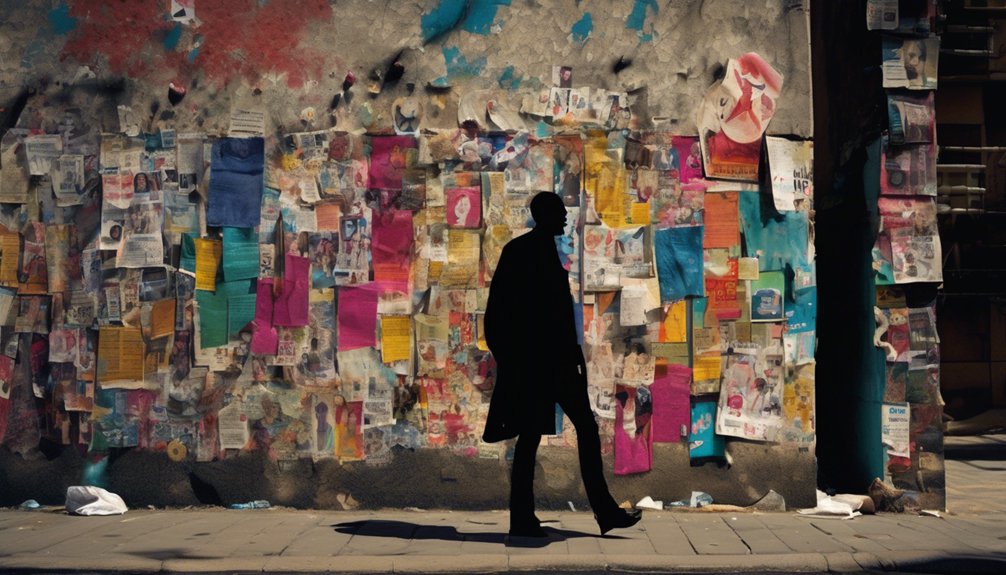The Weight of Misrecognition: Symbolic Violence Against Trans Communities


Table of Contents
ToggleImagine you’re watching a popular film where a trans character is portrayed in a stereotypical, negative light. You notice this misrecognition reinforces societal norms that invalidate trans identities. This symbolic violence isn’t just a media issue; it permeates daily life, affecting mental health and societal participation. How do systemic structures maintain these power imbalances, and what strategies can you adopt for empowerment and inclusion?
When examining symbolic violence in trans lives, it’s crucial to recognize how deeply embedded societal norms contribute to the marginalization of transgender identities. Symbolic violence manifests as misrecognition, where transgender individuals’ gender identities are invalidated, perpetuating a cycle of exclusion and illegitimacy. Bourdieu’s concept underscores the power dynamics at play within social structures that maintain the gender binary, reinforcing discriminatory practices. Empirical research reveals how these societal norms embed themselves in everyday interactions, affecting trans individuals’ well-being and sense of belonging. The media, often a conduit of these norms, fails to represent diverse trans identities, further entrenching symbolic violence. Addressing this requires dismantling the ingrained bias in social structures and promoting inclusive representations that validate and empower transgender lives.

Although often overlooked, the impact of misrecognition on trans identities is profound, shaping not only individual experiences but also broader societal interactions. Misrecognition manifests through societal norms that invalidate transgender people, embedding feelings of illegitimacy and internalized shame. Symbolic violence arises as these norms perpetuate exclusionary narratives, reinforcing systemic misrecognition. The complexity of aligning one’s gender with societal expectations presents distinct challenges:
Misrecognition of trans identities fuels illegitimacy and shame, perpetuating systemic exclusion and symbolic violence.

Despite progress in some areas, invisibility and exclusion remain pervasive challenges for trans communities, underscoring the systemic nature of symbolic violence. Trans individuals often navigate societal invisibility, where media misrepresentation and discriminatory policies reinforce their marginalized status. This invisibility contributes to identity conflicts, as societal rejection leads to internalized inadequacy. Bourdieu’s concept of symbolic violence illustrates how misrecognition perpetuates exclusion, manifesting in apprehension and avoidance of public spaces. Consequently, trans individuals are alienated, exacerbating their societal exclusion.
| Issue | Impact | Emotion |
|---|---|---|
| Media Misrepresentation | Alienation from Society | Isolation |
| Discriminatory Policies | Structural Barriers | Frustration |
| Fear of Harassment | Avoidance of Public Spaces | Anxiety |
| Internalized Invisibility | Identity Conflicts | Inadequacy |
| Lack of Diverse Representation | Erasure of Experiences | Marginalization |
Invisibility persists, reflecting a deeply entrenched societal problem.
Without a doubt, systemic structures are crucial in perpetuating symbolic violence against trans communities by reinforcing social hierarchies and power imbalances. You observe these structures manifest through:
These systemic structures contribute to the marginalization of trans individuals, entrenching symbolic violence within social norms. Trans communities face unique challenges, and their misrecognition is exacerbated by these power imbalances, which perpetuate discrimination and systemic inequality.
Recognizing the systemic structures that perpetuate symbolic violence against trans communities, it’s imperative to focus on strategies that foster empowerment and inclusion. Advocacy for inclusive policies is crucial in mitigating violence and discrimination, ensuring trans rights are legally protected. By implementing organizational practices such as gender diversity training and anti-discrimination policies, you can greatly reduce symbolic violence. Collaborative partnerships between trans communities and organizations improve advocacy efforts, amplifying trans voices in decision-making processes. Mental health support and resilience-building programs are fundamental, countering symbolic violence’s adverse effects and promoting self-acceptance. Furthermore, increasing trans representation in media challenges dominant narratives, fostering a more inclusive society. These strategies collectively advance empowerment, inclusion, and recognition for trans individuals.
You encounter symbolic violence in gender through societal norms and power dynamics that invalidate your gender identity. This violence is subtle, seen in cultural representation that promotes hegemonic masculinity and uses gendered language to uphold systemic oppression. An intersectional analysis reveals how these norms perpetuate inequities, confining you within rigid structures. By challenging these norms, you can work toward dismantling the oppressive systems that limit diverse gender identities and experiences.
One observes symbolic violence through misgendering experiences, where cultural stereotypes and media representation contribute to social exclusion. Language policing enforces identity erasure, making one question one’s self-worth. This leads to internalized oppression, as one navigates a world demanding emotional labor to assert one’s identity. Media often perpetuates harmful narratives, reinforcing stereotypes. These dynamics exemplify symbolic violence, highlighting the intersectional challenges faced in resisting such pervasive societal norms.
When critiquing symbolic violence, you investigate how identity politics and cultural hegemony shape oppressive social norms. You question how power dynamics and gender representation are maintained through systemic oppression, often sidelining marginalized voices. An intersectional analysis reveals that symbolic violence oversimplifies complex realities, failing to account for individual agency. By examining these layers, you challenge the reductionist views that limit transformative change and perpetuate ingrained inequalities.
You investigate symbolic structural violence by examining how cultural norms and exclusionary practices perpetuate systemic oppression within social hierarchies. This form of violence marginalizes voices by imposing rigid identity politics and limiting gender expression. Power dynamics sustain these practices, reinforcing inequality. By critically analyzing these structures through an intersectional lens, you uncover how marginalized communities are kept subordinate, urging a reevaluation to dismantle these entrenched systems of oppression.
You’re standing at the crossroads of change, feeling the weight of misrecognition pressing down. The intricate web of symbolic violence and societal norms seems unyielding, yet you sense a shift, a crack in the facade. Will you seize the opportunity to dismantle these systemic barriers? Through empowered advocacy and inclusive policies, a more equitable future for trans communities is within reach. But the question remains: will society rise to the challenge, or continue to perpetuate the cycle of exclusion?
 Featured PostsNovember 5, 2025Changing Bodies, Changing Desires: Sex Identity in Transition
Featured PostsNovember 5, 2025Changing Bodies, Changing Desires: Sex Identity in Transition Featured PostsNovember 4, 2025Passing Tips Every Trans Girl Should Know
Featured PostsNovember 4, 2025Passing Tips Every Trans Girl Should Know Featured PostsNovember 4, 2025Trans 101: The Facts Everyone Should Know
Featured PostsNovember 4, 2025Trans 101: The Facts Everyone Should Know Featured PostsNovember 4, 2025Beyond the Basics: An In-Depth Preparation Roadmap for Your Facial Feminization Surgery Consultation
Featured PostsNovember 4, 2025Beyond the Basics: An In-Depth Preparation Roadmap for Your Facial Feminization Surgery Consultation